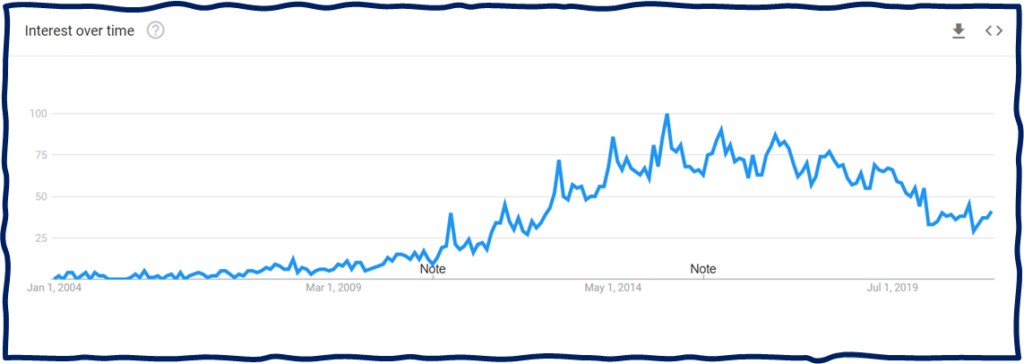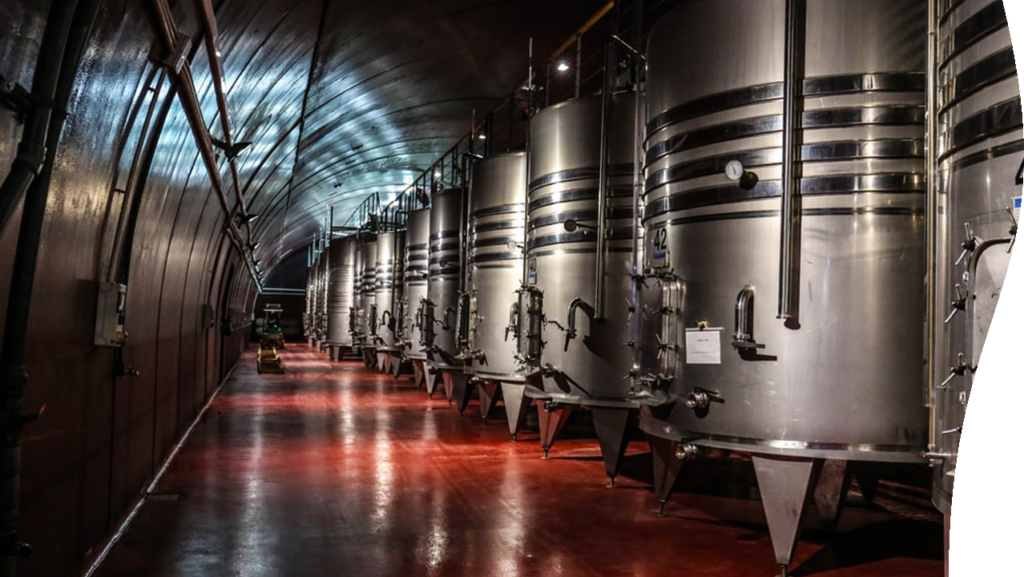Brew-nited States of America
A Brief History of Craft Beer in the United States of America

“Craft beer” is, at this point, ubiquitous – you’ll find it not just at trendy gastropubs but in the aisles of your local grocery store. In a world where IPAs and sours are a standard offering, the not-so-distant past of choosing between Pabst and Miller seems like a faded memory.
Craft brew production in the United States began its renaissance with the 1978 passage of the Home Brew Act, but it is only within the past fifteen or so years that popularity has skyrocketed. Beginning in 2009, Google searches for the term “craft beer” gained steadily, peaking every May, with a pinnacle in May of 2015. The number of searches has declined since then, but it could easily be argued that this is because we don’t need to search anymore — we all know what craft beer is, and we can find it anywhere and everywhere.

In the same time frame, news organizations began paying attention to the craft beer boom. In 2011, NPR first wrote of the “Craft Beer Craze”, and by 2015, large brewing conglomerates were reportedly threatened by this burgeoning industry. Though craft beer sales declined in the United States in 2020 (down 9.3% from the previous year, perhaps as a result of the COVID-19 pandemic), the craft brewing industry still generated $22.2 billion dollars in sales and, in 2019, provided more than 580,000 jobs.1
Despite this enduring popularity, reporters and business insiders have begun to question whether or not the “craft beer craze” can endure.
For every article claiming the craft beer craze is here to stay or that there’s no stopping it, there’s another claiming it is slowing down or dying.

Craft Beer has been here all along!
These arguments seem to overlook, however, that craft beer has always existed in the United States. If the ‘craze’ endured Prohibition, it seems safe to say it isn’t going anywhere anytime soon.


The D.G. Yuengling and Sons Brewery in Pottsville, Pennsylvania is the oldest continually operating craft brewery in the United States. Yuengling is the largest wholly-American owned brewery, having remained in the same family since its founding in 1829. The current owner, fifth-generation heir Dick Yuengling, has no sons, so upon his retirement, the company will pass to his daughters and, for the first time, be owned by female heirs.3
But how is Yuengling considered a craft beer? What makes a “craft” beer, anyway?
Independent & Traditional
The Brewer’s Association says that craft beer is “independent and traditional”.

- The first brewery in what is now the United States was established in 1632 in Lower Manhattan by the East India Company.
- The second brewery was established around 20 years later in what is now Hoboken, New Jersey.
- Early breweries primarily brewed English or German style beers.
- Steam Beer was the first beer style originated in America, first developed by Anchor Brewery in San Francisco and the James River Brewery in Virginia. It traditionally uses a strand of yeast that can withstand higher temperatures, and is chilled by ocean breeze rather than refrigeration.
- The Anchor Brewing Co. still exists, having survived the 1906 San Francisco Earthquake, Prohibition, and bankruptcies and slow sales throughout the twentieth century.
- Anchor employees unionized in 2019, becoming the first unionized craft brewery (though they were acquired by Sapporo in 2017, so perhaps the ‘independent’ piece was violated).
Though Yuengling is mass-produced, it is still locally owned. Other historic breweries from the same era (like Pabst and Anheuser-Busch) are publicly owned and traded.
Local & Artisan
It makes sense that craft beer emerged in the early 2000s, as interest in local and ‘artisan’ food piqued, alongside wider trends surrounding local and regional identity.
Modern craft beer is generally associated with New England, California, the Pacific Northwest, and so on. The interactive visualizations to the left explore the number of breweries in the United States in 2020, using data provided by the Brewer’s Association.
- A text-search of the historic menu collection curated by the New York Public Library revealed that New York-based breweries were most commonly mentioned on pre-Prohibition menus. Could this be because the menu collection is primarily (but not entirely) New York based? Or was New York a brew hub in the nineteenth and early twentieth centuries?
- Beer on pre-Prohibition menus was often listed just with a state or a city, without a specific brewery or even a beer type: “Baltimore Beer”, “New York Beer” and so on.
- Beer brand names often make local references, even in the 1800s: Knickerbocker Ale, Albany Pale, Philadelphia Cream, and so forth.

Unique Flavors, Innovative Products
A recognizable feature of the craft brewery is that they often debut interesting methods and flavors. The India Pale Ale (IPA) is the breakout star of the recent craft beer craze, but it turns out it isn’t so novel at all.
- 1865: First IPA appears on Everett House menu in Lower Manhattan. Likely imported, but no brewery listed.
- 1881: First IPA attributed to specific brewery on Grand Union Hotel menu in Saratoga Springs. It was brewed by Bass & Co. and imported from Burton Upon Trent, England.
- 1892: First American brewed IPA appears on Ladies’ Restaurant menu in Lower Manhattan. It was brewed by C.H. Evans Brewing, only a short distance upstate in Hudson, New York


The word cloud to the left shows that, based on pre-Prohibition menus, popular beer styles and brands were not too different a century ago from those popular today. Ales, lagers, and porters are, of course, still prominent, and Busch, Guinness, Ballantine, and Bass are all still producing beer.
Some beer styles that were popular pre-Prohibition are less common today, however. Champagne Cider? Musty Ale? Bohemian Ale? Double Dark? Perhaps this unique flavors were the markers of a craft brew at the turn of the century.


One reply on “Brew-nited States of America”
Just dropping a comment to let you know I saw this and it looks good. Have a good summer!